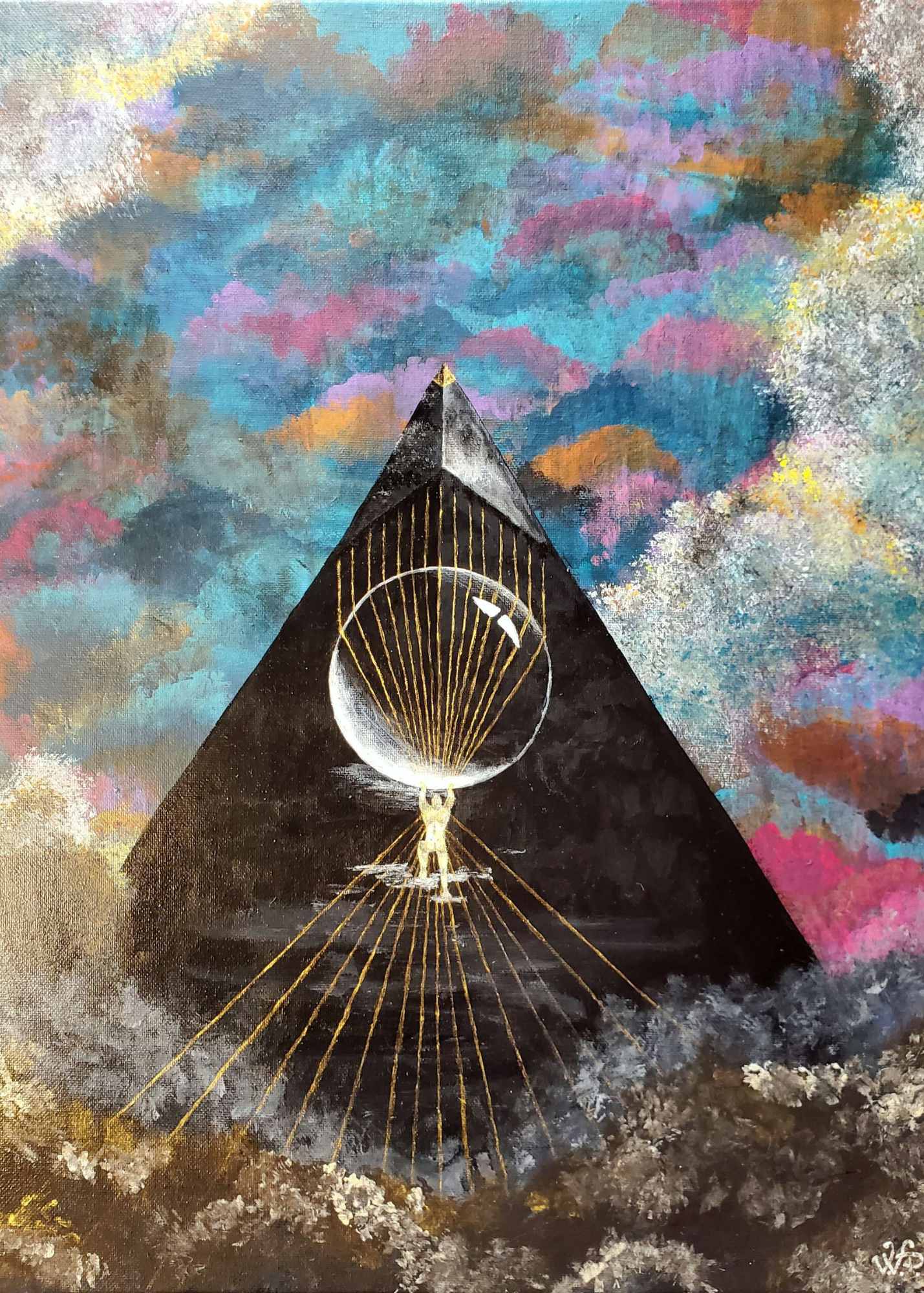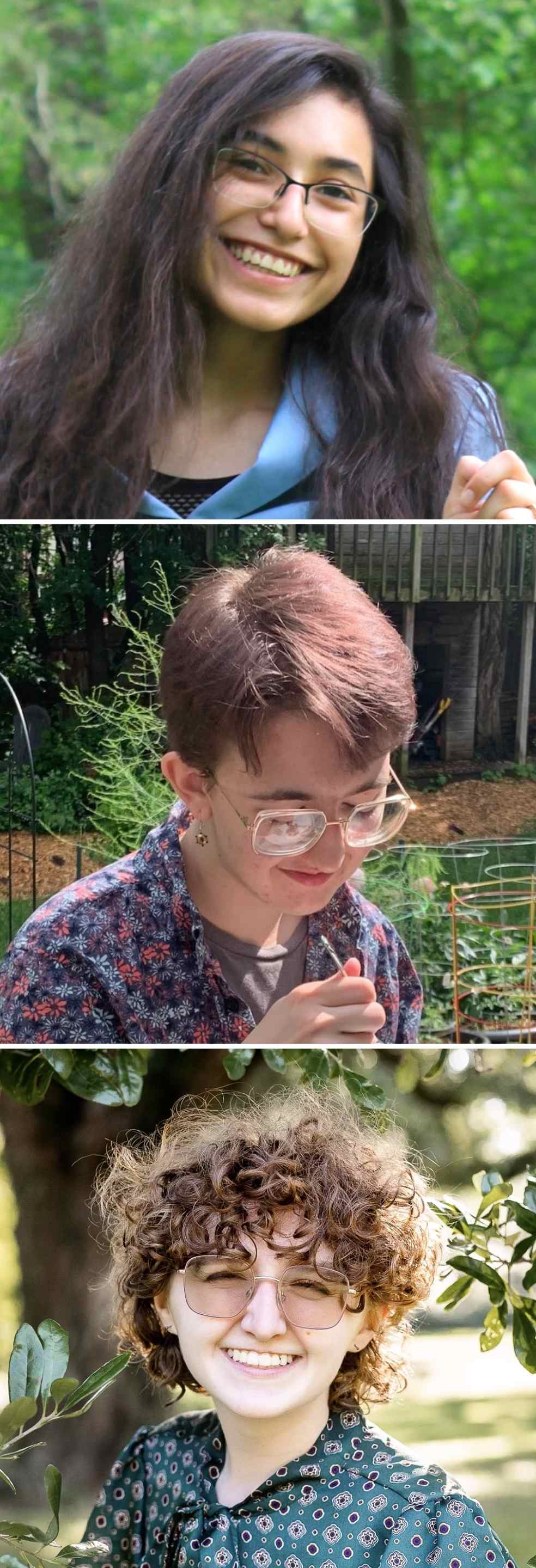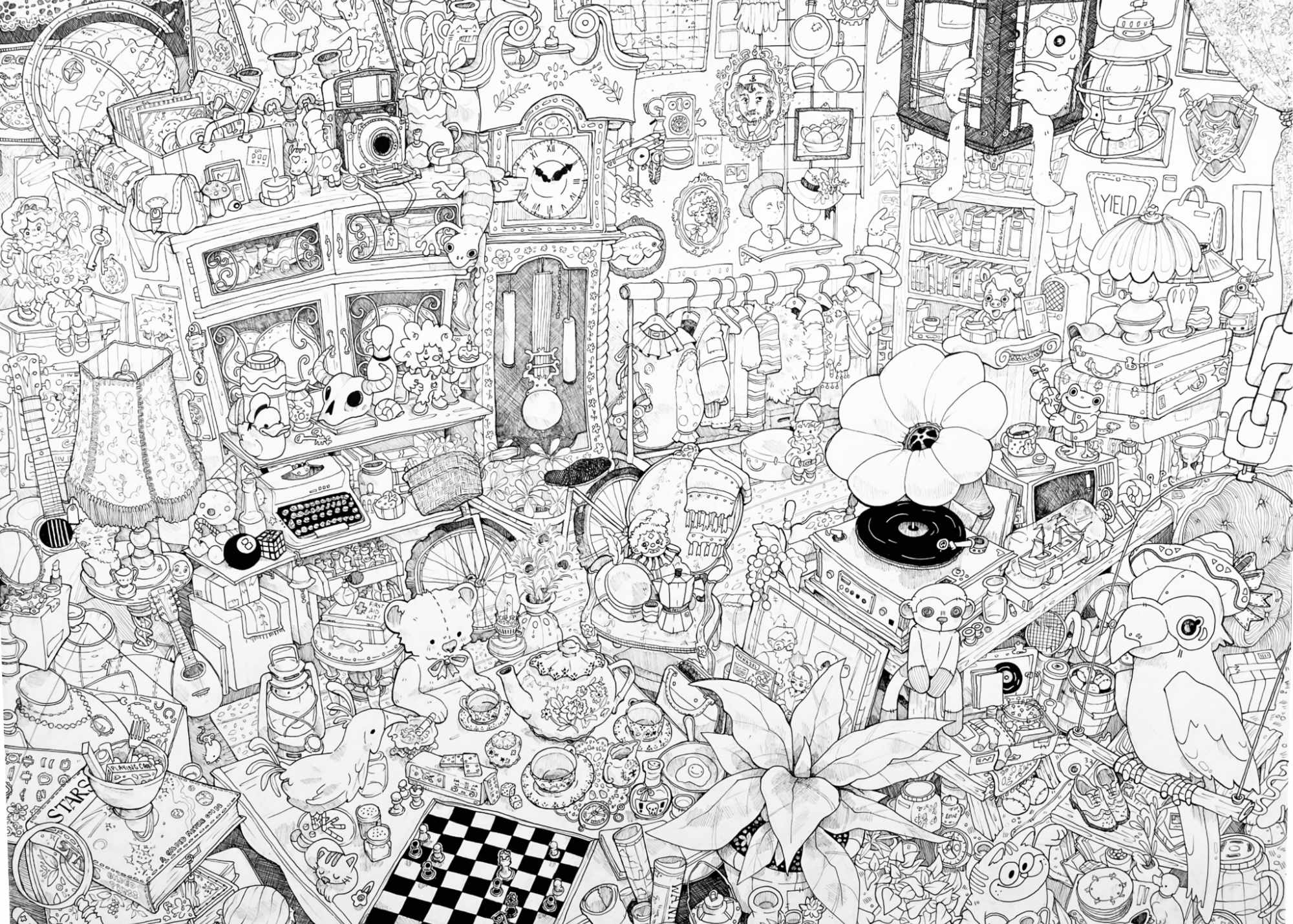Students Find ‘Best of Both Worlds’ at IWU Through Study of Art and Physics
Nov. 22, 2022
BLOOMINGTON, Ill. — Valeria Viteri-Pflucker '22 has always wanted to study “everything.”
“However, everything is somewhat broad,” admitted the physics major, who also chose to minor in math, religion and history at Illinois Wesleyan University. Viteri Pflucker said she chose this wide array of subjects to try and take full advantage of the opportunities provided by a liberal arts education.
“Professors in all of these departments knew me well and supported me through each of these subjects more than I could have hoped. Each of these subjects of study have enriched my life and so have the people who taught them to me,” she said.

She recently merged her knowledge of physics and art into a painting that won best in show at the 2022 Physics Congress, an event hosted by the national honors society Sigma Pi Sigma. The award-winning piece is titled "Sisyphus: Momentum of the Photon." Sisyphus, a figure from Greek mythology, is depicted pushing a crystal ball rather than a boulder up a mountain to represent the force of light in optical traps. In addition, the painting portrays her own challenging academic journey and serves as “a reminder of the surprises and world of possibility the nanoworld holds for us.”
Viteri-Pflucker is now pursuing a doctorate degree in optics at the University of Rochester. She hopes to see more scientists use art as a platform to share scientific ideas with the public.
“Art and science do not seem like natural partners, but art in general is a powerful tool for abstract communication. In this way, art can be used to further science,” she said.
Viteri-Pflucker isn’t alone in her appreciation for the crossover of physics and art.
Otis Buras '26, who uses they/them pronouns, chose to attend Illinois Wesleyan to pursue “the best of both worlds” while earning a double-major in physics and studio art.
“In art I have value, composition or color. In physics I have mass, time or energy. Being able to use simple concepts to create and understand the relationships between them is so critical in both areas. Both physics and art are extremely hands-on and often rely on thinking creatively to solve problems,” they said.
Buras said they have witnessed a “fluidity” in the opportunities for study at Illinois Wesleyan, as well as strong support from advisors and professors.

“I believe this environment (at IWU) has certainly allowed me to be confident in my decisions as well as excited for even more opportunities of study in the future,” they said.
Buras hopes to someday find a career in the arts and entertainment field. They are also eager to dispel the myth that cross-disciplinary studies are unusual or unrelated.
“I hope that in the future, there will be less surprise about those who are drawn to both the arts and sciences,” said Buras. “In the past, there have been so many scientists who are also artists, inventors with fascination for music, and so on. Everything around us is science — and creative fields are certainly not an exception.”
Jaz Belz '24, who uses they/them pronouns, is majoring in physics with a studio art minor. They recently found that a new love of physics paired well with their life-long interest in art.
“I’ve enjoyed learning about science for a long time, but I specifically love the depth and breadth with which physics seeks to answer the ‘why’ and ‘how’ of the universe we live in,” said Belz. “Taking a minor in art has given me the structure and support I need in the subject, while also giving me time to put in my best performance in both the arts and sciences.”
Belz said their combination of studies often strikes people as unusual — but to Belz, it is a natural pairing.
“I would say that our society often constructs a false dichotomy between arts and sciences, acting as though the emotion and expression in the former is mutually exclusive with the rigor and analysis of the other. But to me, physics and art are fundamentally fueled by the same curiosities and desires to understand the world we live in, acting as tools we use to interpret our surroundings , ” they said.
This passion motivated Belz’ decision to attend a liberal arts college that celebrates and encourages interdisciplinary studies.
“The ability to pursue both subjects is definitely one of the reasons I chose to attend IWU, since it gave plenty of opportunity and resources to further my knowledge in the arts and sciences,” said Belz.
“There’s a significant level of depth and rigor in both the art and physics departments, and I’ve been able to pursue research and studio work simultaneously to a degree that I would not have expected at an institution that specializes in only one of the

two fields.”
Chair and Professor of Physics Narendra Jaggi said this combination is not as rare as one might expect, as many of the underlying sensibilities, tastes and skills overlap between the two fields.
“Experimental physicists love to work with their hands. Artists have a strong sense of spatial orientation and of proportion. Physicists are very curious about what is possible, both in this world and in alternative worlds. Artists can walk fluidly between abstractions and stuff you can hold in your palm — physicists do that every day. Both artists and physicists share a certain sensibility towards rigor and imagination,” he said.
Jaggi said he loves to see students “bring their whole self” into the learning spaces on campus and he, along with other faculty and staff, is always eager to support students in their multiple endeavors.
“I loudly celebrate their imagination, their risk taking and their willingness to explore,” he said. “In addition, I am unapologetic about my own rather eclectic range of academic interests, from chemistry to quantum computing. I am always looking for opportunities to make connections among apparently unrelated ideas and approaches.”
Physics is all about understanding how the world works, and Jaggi said in that way, physics is “always pertinent, profound and pretty.”
By Julia Perez